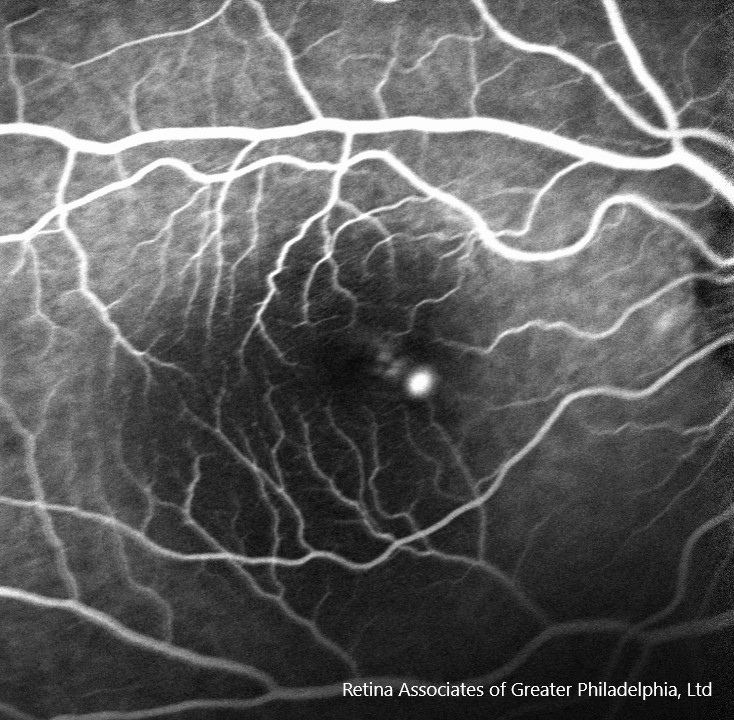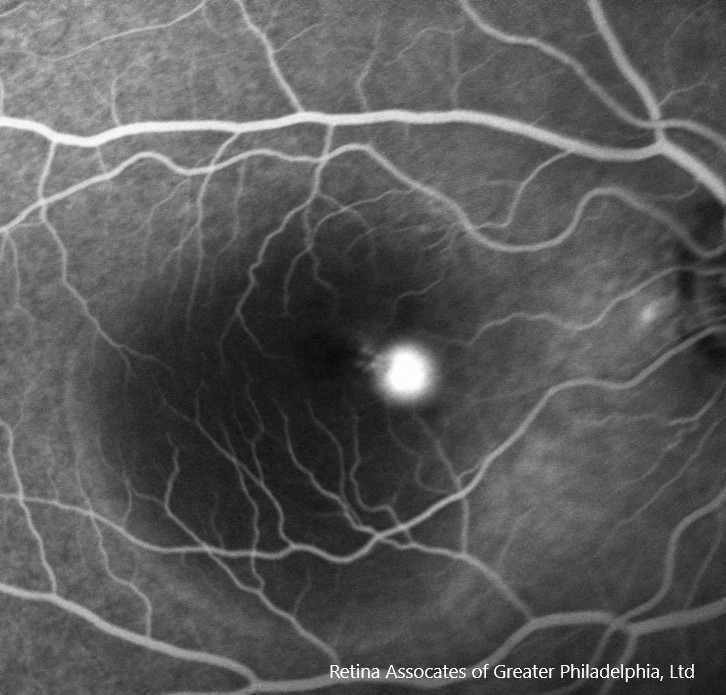What is central serous retinopathy?
Central serous retinopathy, also known as CSR, is a condition in which fluid accumulates under the retina; the neurosensory tissue of the eye that transmits the optical images we see into the electrical images our brain understands. The fluid collects in the subretinal space, as well as underneath the retinal pigment epithelial layer, causing a serous detachment of the retina and pigmented epithelial detachments or PEDS. Pathology is most often confined to the macula. The macula provides the sharp, most light-sensitive central vision we need for things like reading and driving, therefore CSR causes distortion or blurring of central vision. Central serous retinopathy is also known as central serous chorioretinopathy, or CSCR.
What are the symptoms of central serous retinopathy?
Symptoms of central serous retinopathy may include: blurry and distorted vision, a dark spot in vision, a reduction in contrast sensitivity, and muted colors. Objects may appear smaller than they are. CSR is a condition that most often only affects one eye.
What causes central serous retinopathy?
In many cases, central serous retinopathy is idiopathic, meaning its cause is unknown. However, multiple risk factors have been associated with CSR:
- Males between the ages of 20-50 are more at risk for CSR.
- Stress. When under stress, the body releases a natural steroid into the bloodstream called cortisol which helps the body to cope. Although cortisol is essential for health, raised levels can cause problems, like inflammation in the body.
- Corticosteroids. Corticosteroids, specifically glucocorticoids in all forms; topical, oral, inhaled, and injected have been linked to CSR. Any patient with diagnosed with CSR, should not use corticosteroids if possible.
- High blood pressure.
- Cushing syndrome. A rare condition that is the result of too much of the hormone cortisol in the body.
- Pregnancy. Plasma cortisol levels are elevated during pregnancy, particularly during the third trimester.
- Autoimmune disease.
A fundus photograph image of a right eye demonstrating subretinal fluid consistent with central serous retinopathy.
An optical coherence tomography, or OCT scan demonstrating subretinal fluid consistent with central serous retinopathy and a pigmented epithelial detachment, or PED.
What can I expect during a visit to evaluate possible central serous retinopathy?
After a comprehensive, dilated eye examination is performed by your ophthalmologist, a series of diagnostic tests may be ordered to better evaluate the health of your retina. These tests include, but are not limited to:
- Fundus Photography
- Optical Coherence Tomography (OCT)
- Optical Coherence Tomography Angiography (OCT-A)
- Intravenous Fluorescein Angiography (IVFA)
Once diagnostic tests are performed, your physician can better map your retinal needs in order to best preserve your vision.
Intravenous fluorescein angiography images, or an IVFA study illustrates increased hyper-fluorescence post dye injection consistent with central serous retinopathy. The “bright spot” aids in the physicians’ assessment to better locate leaky blood vessels.
How is central serous retinopathy treated?
In most cases, treatment may not be necessary as the underlying fluid may spontaneously resolve on its own after 2-3 months. However, patients that show persistent visual defects with lack of improvement after a few months may require alternative therapies. Treatment options may include:
- Oral medications
- Laser therapy:
Focal Laser Therapy, or photocoagulation therapy may be used to stop or slow the progress of central serous retinopathy. The ophthalmologist utilizes a laser light beam targeting selected blood vessels of concern with precision. Small, superficial, laser burns are applied to these vessels in order to preserve further bleeding, or fluid (edema), while leaving the surrounding, healthy tissue untouched. This procedure is done in the office.
Pre and post treatment optical coherence tomography, or OCT thickness maps demonstrate resolution of active leakage in a patient with central serous retinopathy.







